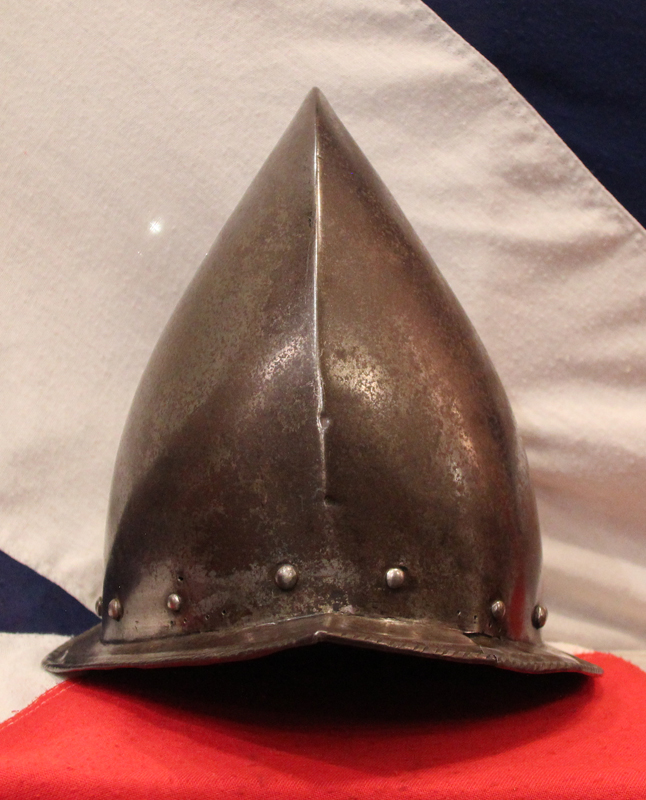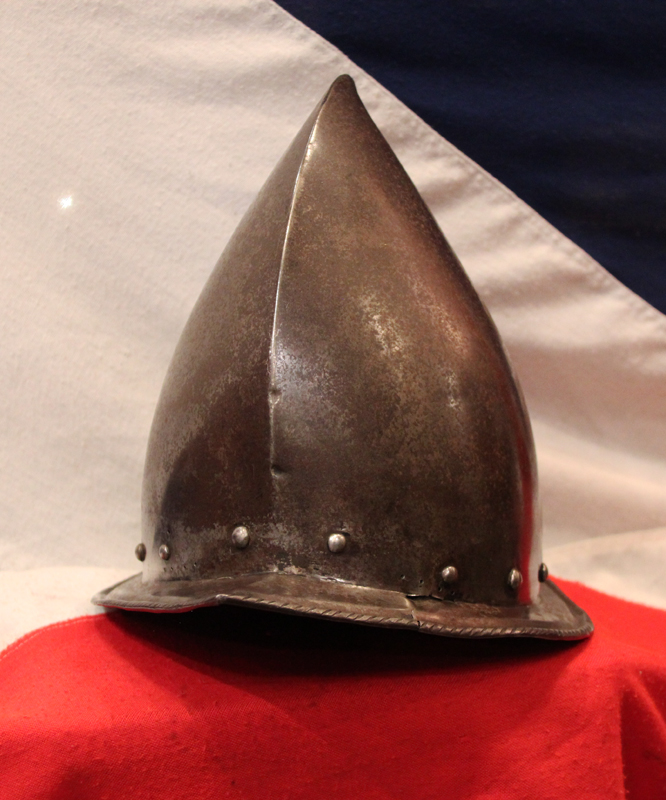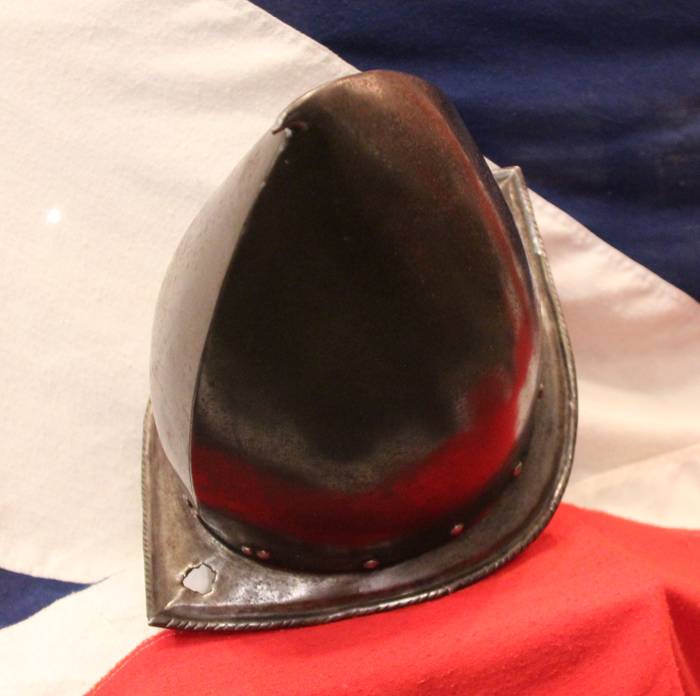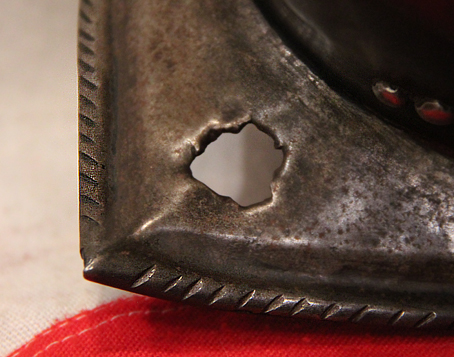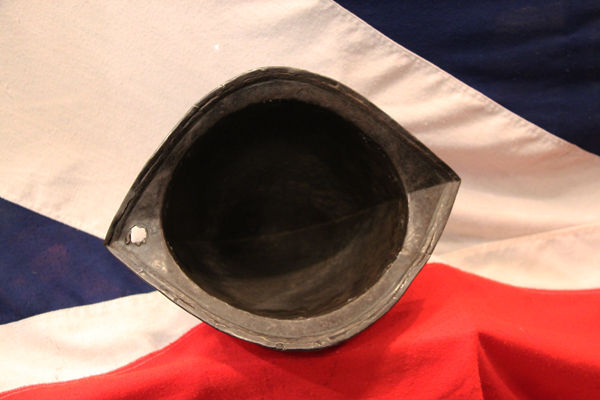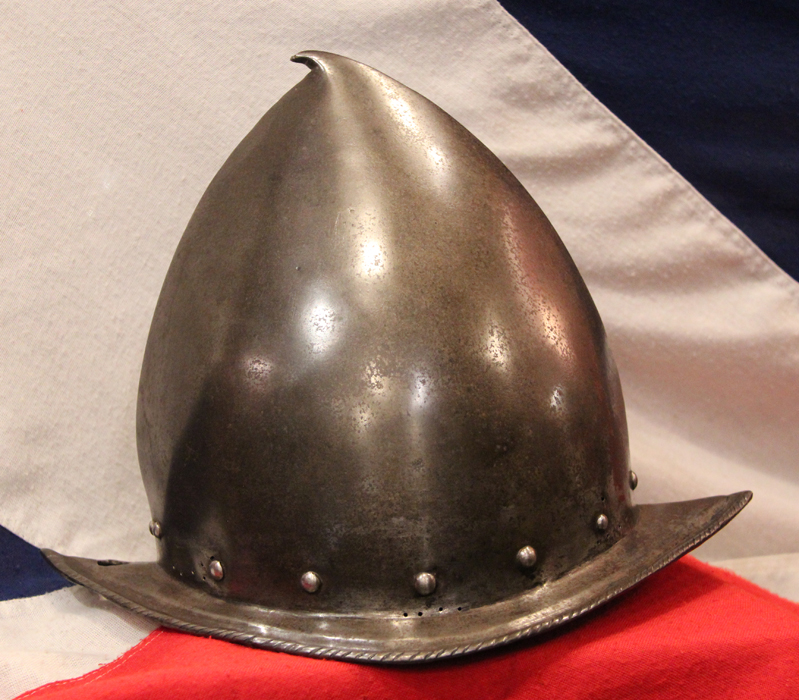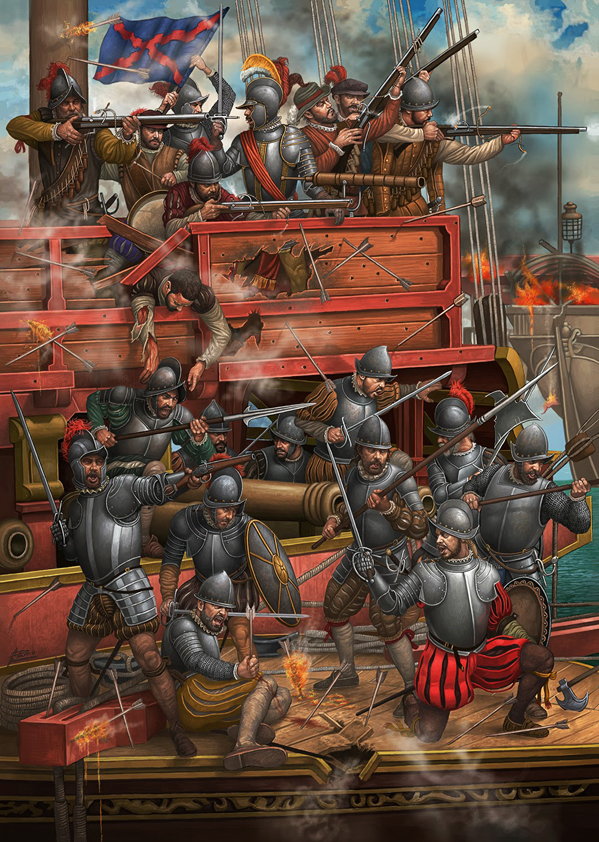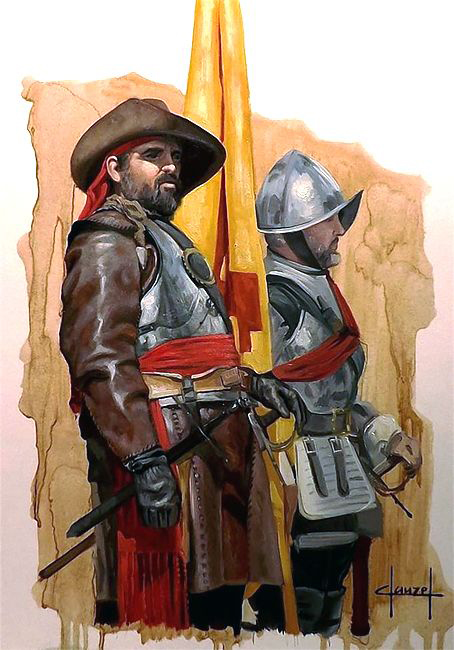A Very Fine and Beautiful, Original 16th Century ‘Conquistadors.’ Type Morion Helmet, Captured From the Spanish Armada Attempted Invasion of Britain. Used by All Ranks, Captains, Commanders and Soldiers Alike
The traditional 'pear stalk crown' with wide upslanting brim. All the lining rivets intact. Small hole in the rear brim to attach feather plumes or to hang the helmet behind the soldiers backplate armour when not worn. The form of helmet worn by the Spanish during the attempted invasion of England, and by the Spanish explorer warriors conquistadors that colonised much of South America. Taken as war booty, often using early diving bell technology, from the sunken Spanish fleet's attempt to destroy the British using its seemingly unstoppable Armada of 130 ships against Queen Elizabeth Ist.
Met by the British fleet, under Sir Francis Drake's commanded, he engaged the superior gunned Spanish during a storm, that ultimately led to his fleet to victory against the Spanish fleet, and effectively crushed the planned invasion. The Spanish fleet fled in fear and mostly met its doom on the coast of Ireland, and North Britain, caught in persistant storms and foul weather. The Spanish Armada campaign of 1588 changed the course of European history. If Medina Sidonia, the Spanish commander, had managed to escort Philip II’s 26,000-strong invasion army from Flanders, the future of Elizabeth I and her Protestant England would have looked very black indeed.
After landing near Margate in Kent, it is probable the battle-hardened Spanish troops would have been in the streets of London within a week. England would have reverted to the Catholic faith, and there may not have been a British empire to come. We might indeed still be speaking Spanish today.
But Medina Sidonia suffered one of the most signal catastrophes in naval history.
The Spanish were not only defeated by the queen’s plucky sea dogs fighting against overwhelming odds: it was utterly destroyed by appalling weather, poor planning and flawed strategy and tactics. Interestingly at least four of Medina's so-called gentlemen adventurers were English, and there were 18 among the salaried officers.
Inevitably, some of the traitorous swine paid the heavy price of disloyalty to the British crown: five Catholics slipped away by boat from the stricken Rosario before Drake’s arrival, but two Englishmen were captured on board and taken to the Tower of London as rebels and traitors to their country.
One, identified as the Cornishman Tristram Winslade, was handed to officers employed by Elizabeth’s spymaster, Sir Francis Walsingham, who were ordered to interrogate him using torture at their pleasure. Miraculously, Winslade survived the rack and Elizabeth’s justice, and died in the Catholic seminary at Douai in France in November 1605).
On board the battle-damaged San Mateo, beached between Ostend and Sluis after the battle of Gravelines, two Englishmen were killed by Dutch sailors one named as William Browne, a brother of Viscount Montague. The local commissioner for the Protestant States of Zeeland reported that the second man killed was very rich, who left William as his heir.
Other Englishmen were reported to having been aboard this ship, eating with her captain, Don Diego Pimentel. One was called Robert, another Raphael, once servant to the mayor of London. We do not know their surnames. They may have been among those forcibly drowned or hanged by the Dutch who were rebelling against Spanish rule. Medina, however, was no fool and although a great commander, and considering his appointment as admiral of the Armada for two days, Medina Sidonia made clear his absolute conviction that the Armada expedition was a grave mistake and had little chance of success. Only a miracle, he added in a frank and outspoken letter, could save it.
King Philip of Spain’s counsellors, horror-struck at its electrifying contents, dared not show it to the king. ‘Do not depress us with fears for the fate of the Armada because in such a cause, God will make sure it succeeds” they begged the new admiral.
As for his suitability for command, “nobody knows more about naval affairs than you “ they stated.
Then their tone became menacing: “Remember that the reputation and esteem you currently enjoy for courage and wisdom would entirely be forfeited if what you wrote to us became generally known (although we shall keep it secret)”. The Spanish Armada was not the last Armada sent against England. Two more were despatched in 1596 and 1597, but these fleets were also dispersed by storms.
Cannon and armour such as this were in fact recovered from the Spanish wrecks using diving bell technology in the 1590’s. Effectively huge bronze church bells.
Staying submerged began as a simple trick, a novelty meant mostly for spectacle. But like most human exploration, the underwater landscape became appealing for its latent revenue opportunities. At first, diving bells appear to have been most heavily used in the pearl and sponge industries. Then, in 1531, the Italian inventor Guglielmo de Lorena came up with a new application. Using slings to attach a bell to his body, he could collect treasure from capsized Roman ships. After the defeat of the Spanish Armada in 1588, according to Francis Bacon, Spanish prisoners spread the word that their captors’ riches had sunk off the coast of Scotland; industrious divers used bells to recover cannon armour and booty.
The first account of diving bells comes from Aristotle in the 4th century B.C. Legend has it Aristotle’s pupil Alexander the Great went on to build “a very fine barrel made entirely of white glass” and used it in the Siege of Tyre in 332 B.C. However, the facts of Alexander the Great’s adventures come mostly from depictions in fragments of ancient art and literature, which render him as a demigod who conquered the darkness and returned to the dry realm of historians and poets.
Code: 21777
2595.00 GBP


